Don’t confuse an economuseum with an ecomuseum. An economuseum (or ÉCONOMUSÉE® ) is a growing movement in parts of the world that showcase living arts, artisanal food making, crafts and culture. Although Quebec is renowned for its unique French Quebec culture, far too few visitors know about its vibrant network of 31 ÉCONOMUSÉE®.
From remote Iles de la Madeleines to Charlevoix, from Quebec City to the Outaouais (pronounced Ooo-tay-ways), these special economuseums showcase the artisanal foods, legends and arts of this fascinating province.
Of all the wonderful things to do in Canada, exploring French Canadian culture is fascinating.
Most visitors might have heard about Quebec’s famous sugar shacks that dish up traditional Canadian maple syrup and taffy.
But beyond the sugar shacks, there’s a network of ÉCONOMUSÉE® that are fascinating to explore.
What’s even more interesting is that when we start researching the economuseum concept, it’s actually a North American as well as international movement.
The goal of an ÉCONOMUSÉE® is to keep traditional arts, crafts and trades alive.
Today, Quebec’s network includes economuseums which teach how to make paper, cheese, wooden sculptures and chocolate through to blacksmithing.
Exploring Canada? Here are 22 Canadian landmarks you will love and you might also enjoy 30 facts about Canada you probably didn’t know.
Contents
Economuseums
What’s an Economuseum?
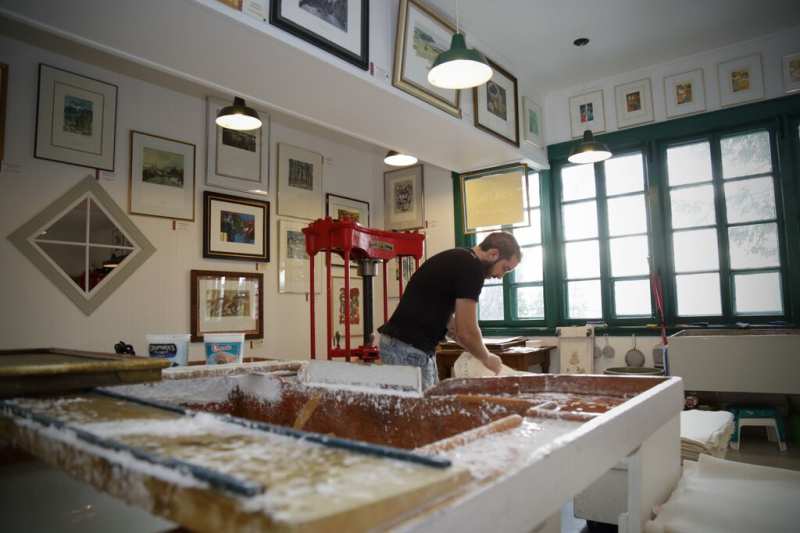
The Encyclopaedia of French Cultural Heritage in North America describes the concept as a network with a mission to promote traditional crafts.
The ÉCONOMUSÉE® idea was inspired by Félix Antoine Savard’s Papeterie Saint-Gilles in the Charlevoix region of Quebec and the network, which now has 50 members in Quebec and Canada’s Atlantic provinces, was created 10 years after his death.
So when we visit, not only can we expect to purchase the product (cheese, wooden or metal sculptures, and so on), we can either view items being made or at minimum learn how they are made via a series of interpretive panels.
Almost always we have the chance to chat with an artisan, which adds that extra-special layer of personal connection to any visit.
Of the 31 ÉCONOMUSÉE® throughout this province, here are my favourites, starting from westernmost Iles de la Madeleines (islands northeast of Prince Edward Island), Charlevoix, Quebec City and region, and the Outaouais (West Quebec).
ÉCONOMUSÉE® in Quebec – Îles de la Madeleines
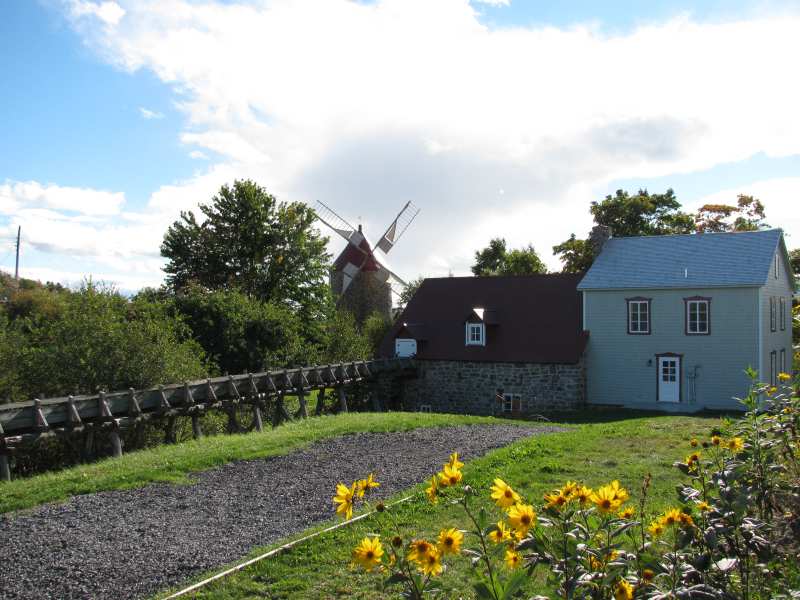
The sandy archipelago of windswept islands is drop-dead gorgeous to explore, home to les Madelinots (local residents).
Gaily coloured homes snuggle the coastline – just as in Newfoundland and other maritime places in maritime North America, houses are painted extraordinary colours (say, raspberry with a brilliant teal trim) so that fisherman could identify their homes while at sea.
Nowadays, les Îles are a haven for anyone who loves kayaking, wind-surfing, horseback riding, visiting seals on ice in wintertime – and exploring economuseums to capture the traditions of yesteryear.
1- Le Fumoir d’Antan – Herring
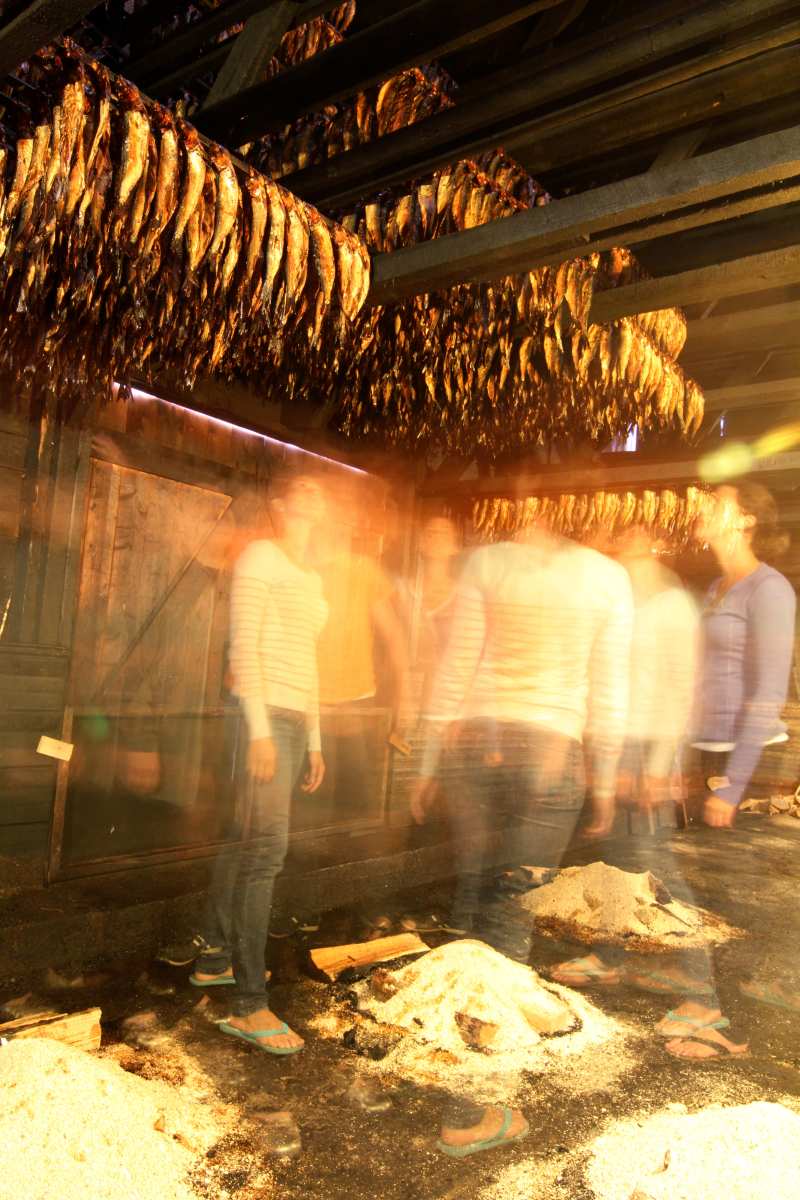
Talking about fishermen, herring is a staple fish throughout the northern world.
And, as in days of old, this species is still smoked and cured, which preserves them for consumption throughout the year.
This economuseum perpetuates this tradition, which was introduced here from Maine, and New Brunswick’s Grand Manan Island.
Enter Le Fumoir d’Antan where the Arseneau family has three generations of experience in both smoking and marinating herring, as well as mackerel, salmon and scallops.
If you enjoy seafood, come to see the fragrant smokehouses where fish are suspended in the lofts of the smokehouses.
What’s even more interesting is these circa 1870 wooden buildings now have designated heritage status because they’re the only still-operating traditional industrial buildings on the islands.
2- Fromagerie du Pied-de-Vent – Cheese
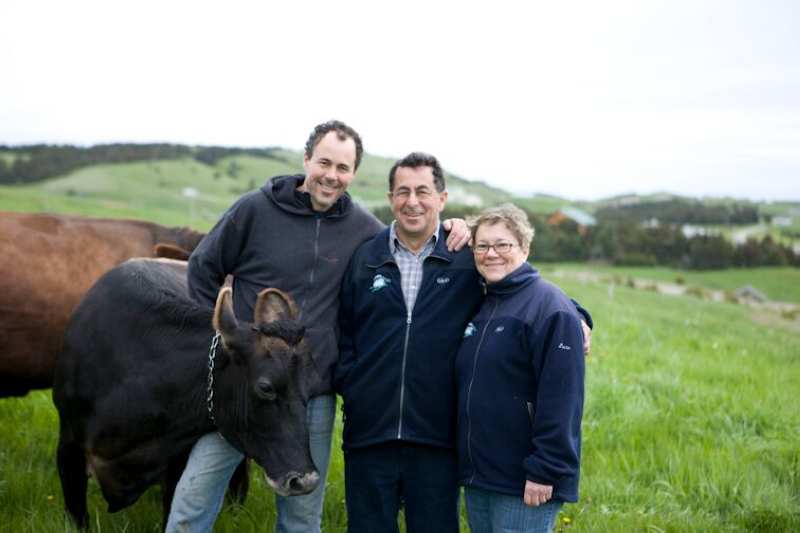
Mmmm… Imagine a semi-soft ripened cheese with a creamy texture.
Imagine it being made from the cream of a rare breed in North America, the Canadienne (Canadian) cow, which in summertime grazes on salt-spray grasses of Les Îles.
Sound too picturesque for words?
Consider the romantic sound of the name of this cheese that comes from a French-Canadian expression meaning “the sun’s rays piercing through the clouds.”
This exquisite fromage made from family-owned, extremely contented cows delights the palate. Ask to meet Gérémie and Lucie Arsenault.
If they’re there, they’ll explain how a herd of 60 Canadian cows was shipped on-island in 1998, and they’ve been making Pied de Vent ever since.
A choice Quebec cheese, it’s found in specialty cheese shops and fine restaurants throughout the province.
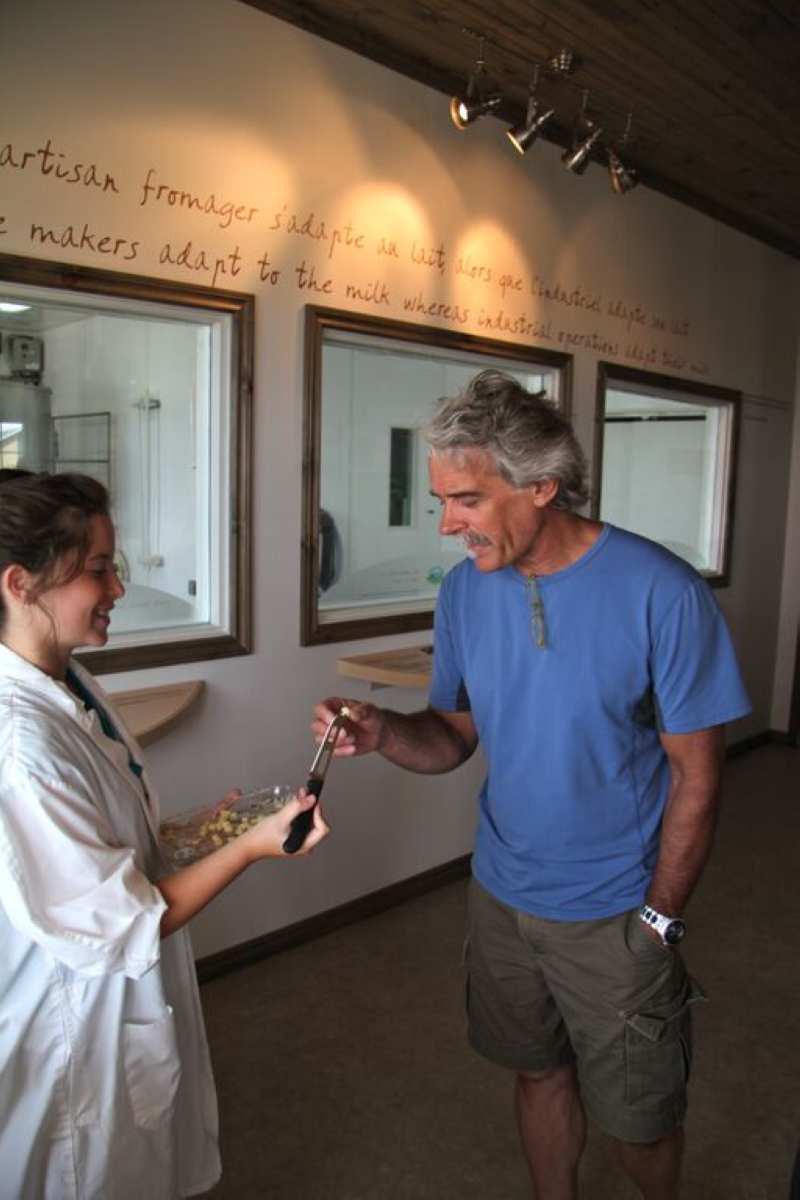
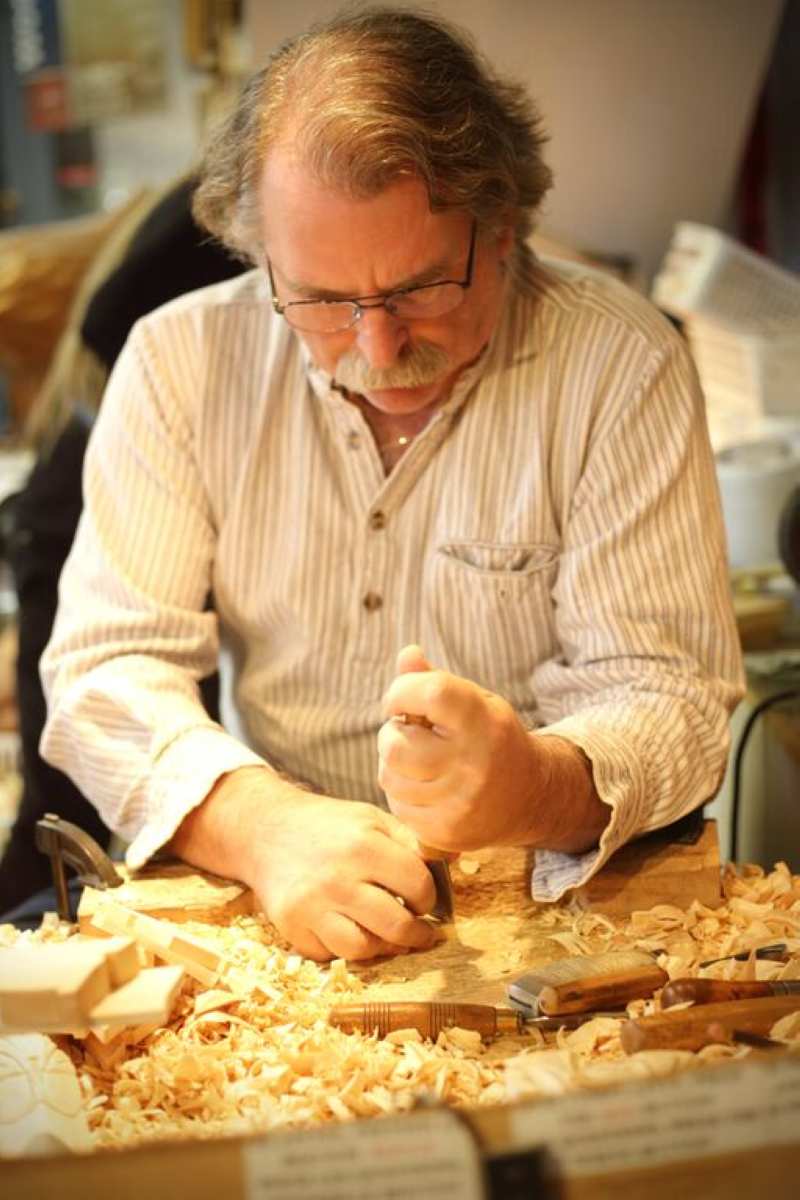
ÉCONOMUSÉE® in Quebec City region
3- Atelier Paré – Wood sculpture
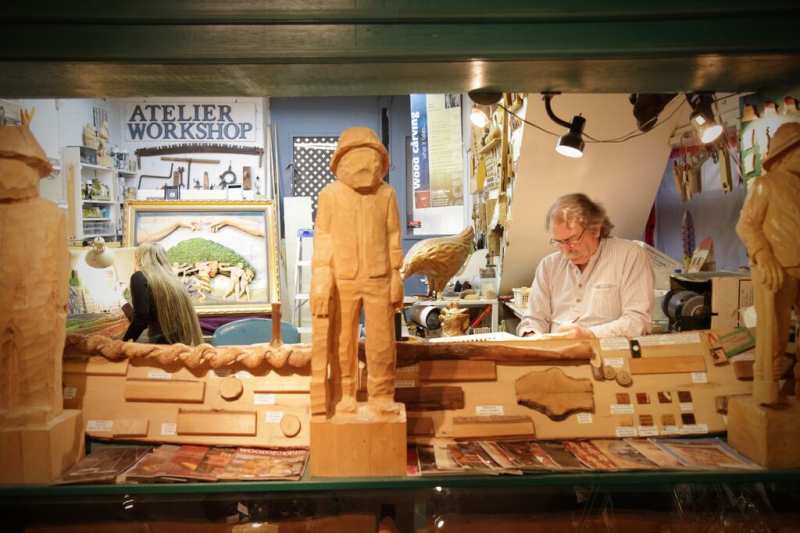
Quebec is famous for its wooden sculptures – and also renowned for its folk legends and stories.
Here at Atelier Paré located just east of Quebec City along the Côte-de-Beaupré, the two are married in the most whimsical, engaging ways.
Watch artists carve such items as a rooster and decorate the final product.
The crowing rooster was a traditional symbol of Roman Catholic Quebec, where many roofs on peoples’ homes would sport the bird fashioned in metal or wood.
Call ahead to Atelier Paré if you wish to hear some fascinating storytelling.
The presentations are about fifteen minutes long and will interpret one of founder-artist Alphonse Paré’s carved murals.
It depicts one of Quebec’s most-loved legends, “La Chasse-galerie” or “The Bewitched Canoe.”
Listen to the tale of hapless woodsmen who wanted to visit their girlfriends and escape the drudgery of their work.
So, they sold their souls to the devil… and, of course, things don’t go well…
This is my favourite of all the economuseums in Quebec because in many ways it speaks to the heart of this province’s cultural traditions.
Go, I’m sure you’ll love it and learn much about the Quebecois soul.
4- Cassis Monna et Filles – black currant
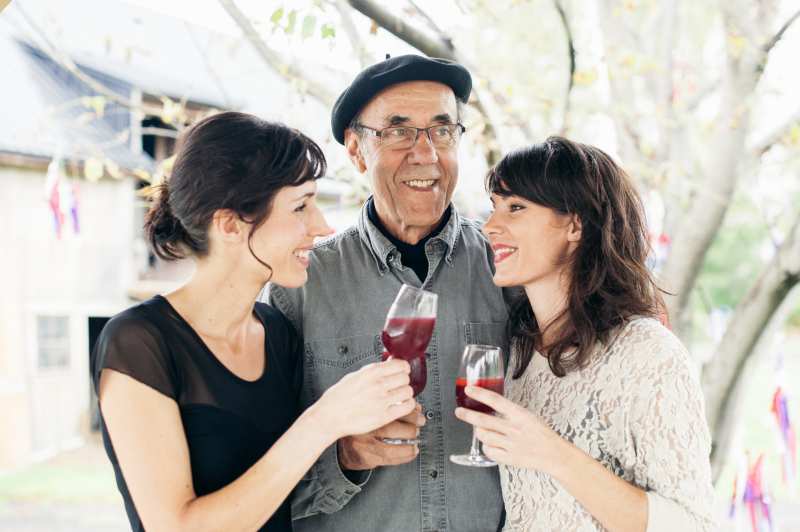
Do you like the flavour of blackcurrants?
Many of us love cassis and kir aperitifs, and if you also enjoy jams, jellies, syrups and ice cream made from this richly flavourful and deep burgundy coloured berry, don’t miss a stop here.
Located on the pastoral island of Île d’Orléans, a twenty-minute drive east of Quebec City, Cassis Monna et Filles started in 1872, when Louis Monna started a distillery in l’Hérault, France.
Fast forward to the early 1970s, when fourth-generation Bernard Monna arrived on-island and started to grow black currants and create delectable Crème de Cassis and wines.
Now, more than 40,000 bottles are produced annually from berries grown on 16 hectares of this highly productive soil.
Why not tour this peaceful island – and sample its produce?
5- Les Artisans du vitrail – glass
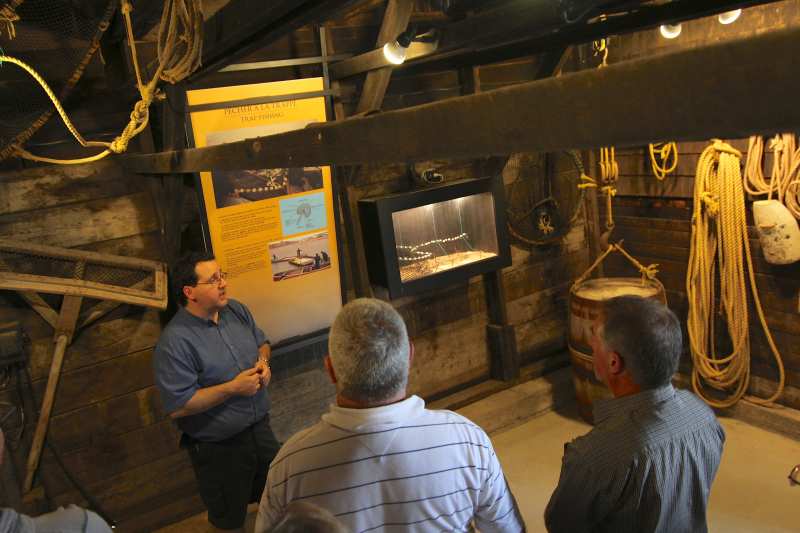
In Quebec City’s old lower town of Petit Champlain, and near the foot of Escalier Casse-cou (Break-Neck) stairs, visit this glass economuseum.
Here, shimmering suncatchers through to larger stained-glass artworks catch and reflect light, creating a kaleidoscope of colour on a sunny day.
What’s even more fun, it’s possible to take courses here.
What a great way to improve your French, and learn a new skill right in the heart of historic Quebec!
From a one-day beginner’s course through a several-day workshop, you can make a suncatcher through to a Tiffany-style lampshade.
6- La Forge à Pique-Assaut – blacksmithing
Remember I mentioned the cockerel as a symbol of Quebec?
Here at this forge, also on Île d’Orléans, you’ll likely discover metal fabricated rooster weathervanes along with Pegasus flying horses and more.
Guy Bel works at Forge à Pique-Assaut, creating a fanciful array of wrought ironwork including banister rails, gates, furniture as well as old-fashioned hardware.
Sometimes, he will let you try your hand at the forge…
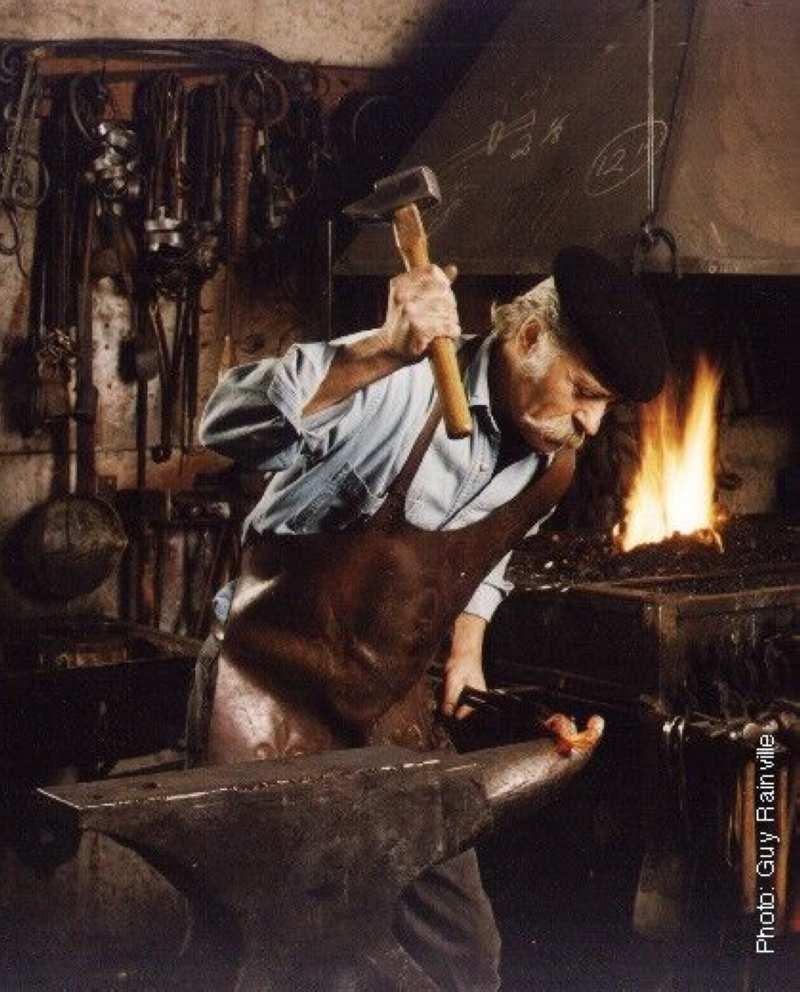
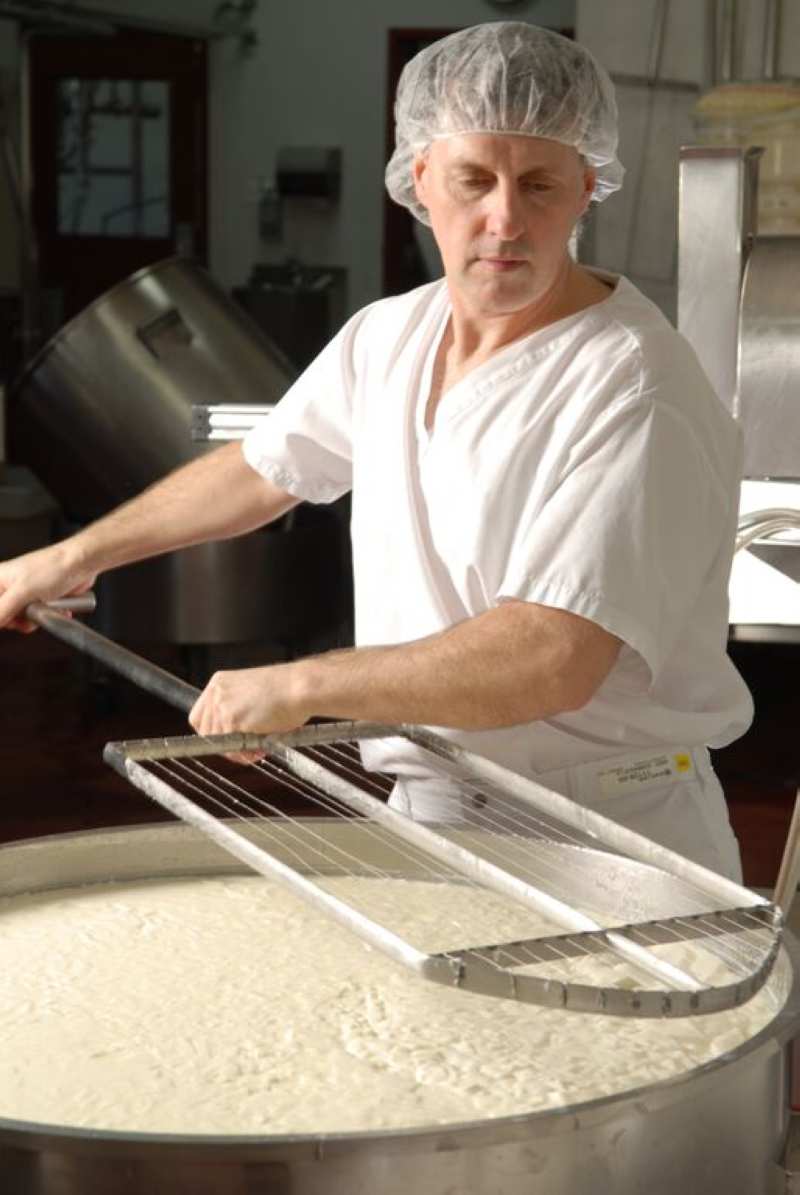
ÉCONOMUSÉE® in Charlevoix
Ask a Quebecker about Charlevoix, and you’ll likely be received with a broad smile and an appreciative sigh.
Pronounced “Shar-lay-vwah”, this region of undulating hills, lowing and contented cattle, and fanciful farms offers a host of artistic and gastronomic delights.
Just drive one of Charlevoix’s flavour trails…
And because Charlevoix borders that broad, saline and tidal section of the St. Lawrence River known as “la mer” (the sea), just like on Les Iles de la Madeleine mentioned above, Charlevoix’s pastures are filled with salty grasses.
All the better for cheesemaking, you’d think – and you’d be right.
7- Laiterie Charlevoix – cheesemaking
Come here to taste this fromagerie’s Le 1608 cheese, named for the herd of cattle brought here from France in that year, which started the Canadienne breed of cow I mentioned above.
At their peak, more than 500,000 Canadiennes were in use in 1900, but fewer than 500 are alive now – hence their status as a rare breed.
And yes, you can meet one of these beautiful animals grazing right here at the laiterie (in summertime).
Eight cheeses are made on-site, including Vieux Charlevoix, a cheddar.
Originally from Cheddar, England, nowadays this popular cheese is made all over North America.
Here at this economuseum, ask cheesemakers about the history of cheesemaking in Quebec, taste their varied products, and even have a picnic outside.
8- Papeterie Saint-Gilles – papermaking
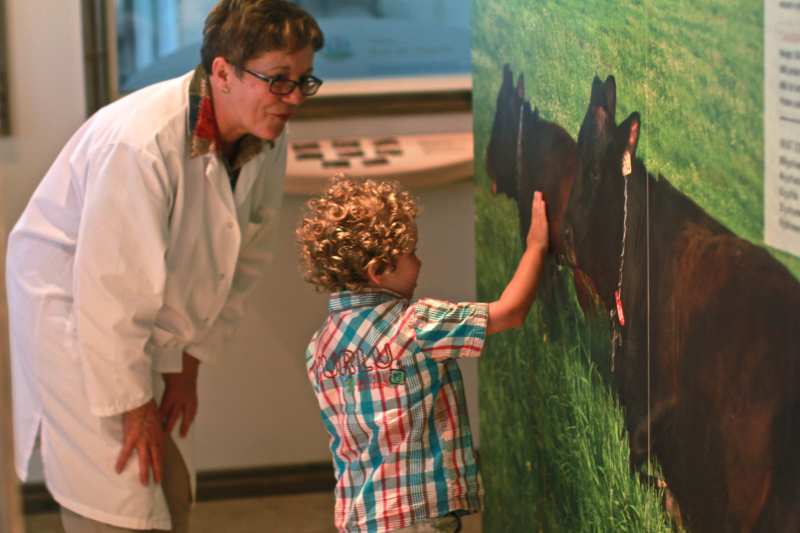
I love paper… and as a writer, I love using fine paper for a special message for a special someone, where I’ll use a favourite pen.
As a visual artist, I enjoy the tactile nature of paper for mixed media through to watercolour works.
So you can well imagine how Papeterie Saint-Gilles, which preserves the old-style techniques of papermaking from the 1700s, fascinates me.
Located in a pretty little village called Saint-Joseph-de-la-Rive (St. Joseph of the River overlooks the St. Lawrence), this economuseum is housed in a Victorian clapboard home.
See the vats, moulds, presses and other paraphernalia of papermaking – in use.
View contemporary artworks adorning the walls, where your imagination takes flight while seeing what artists create with this artisanal paper.
9- Les Moulins de l’Isle-aux-Coudres – Économusée de la meunerie
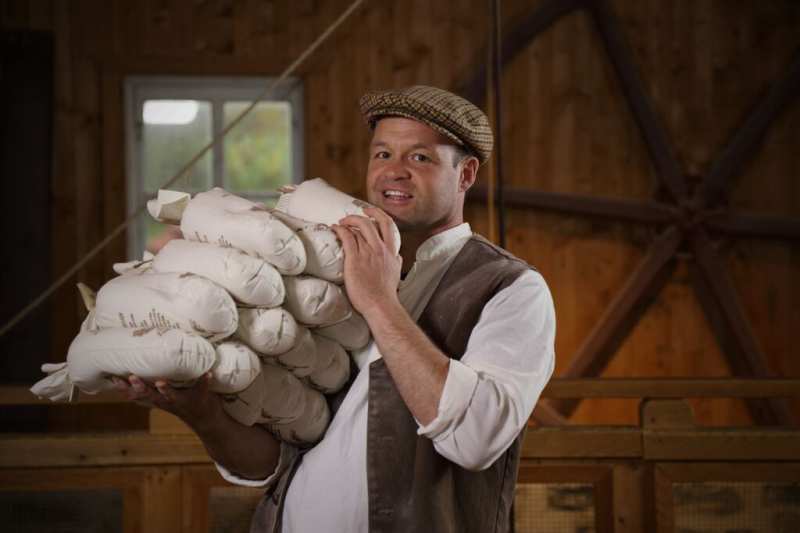
Take the free ferry from Saint-Joseph-de-la-Rive and cross to l’Isle-aux-Coudres (Island of Hazelnuts, named in 1535 by French explorer Jacques Cartier).
Here visit a historic 1825 watermill, 1836 windmill and the miller’s house to see how flour used to be made.
In addition, ask to see the collection of masks used by islanders here during Mi-Carême, a carnival-like celebration on Ash Wednesday, where mask-clad villagers go from house to house, celebrating Easter.
ÉCONOMUSÉE® in Outaouais (West Quebec)
This vast region of lakes, rivers and villages is home also to Gatineau – the capital of Canada’s twin city, lying north of Ottawa (here are more things to do in Ottawa), on the north shore of the Ottawa River.
Venturing east of Gatineau (or west of Montreal) you’ll come to the hamlet of Montebello where you’ll discover what’s arguably the most delicious economuseum of all…
10- Chocomotive – chocolate-making
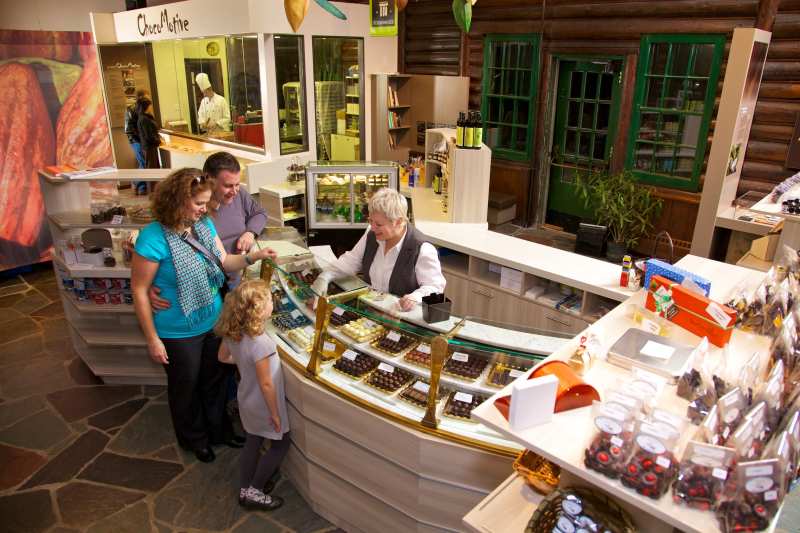
The art of making artisan chocolate is being kept alive in many places in Canada (read about artisan chocolate in British Columbia).
Chocolatier Gaëtan Tessier is the most amiable of persons.
The master chocolatier adores his work and we’re all thankful he does, because he transforms organic, free-trade chocolate into fabulous fare.
Want a simple bar of pure dark chocolate?
Step right up.
Prefer salt, chili peppers, caramel or a host of other fanciful treats combined into your dark, milk, or white chocolate?
No problem.
Frankly, my only dilemma when visiting Chocomotive and speaking with Gaëtan or his knowledgeable staff is how on earth to leave without spending lots on a host of temptations.
And that, as he says, is decidedly not his problem, but an affirmation of his craft.
So come, I dare you: step into the former Montebello train station to embrace the sinfully delectable scent of chocolate.
Have that hot chocolate.
Watch the chocolatiers pouring their molten chocolate into bunny, valentine or other moulds.
And stock up.
After all, why not?
Now you know my favourite economuseums… but now it’s time to check out the other 21, and figure out which ones you wish to visit in Canada’s belle province, Quebec.
Enjoy your research into traditional crafts – I sure did.
Want to learn about the heartbeat of Quebec?
Visit the economuseums!
- 25 Things To Do In Banff
- 25 Things To Do In Toronto
- 50 Things To Do In Vancouver
- 20 Things To Do In Whistler in Winter
- 7 Things To Do In Gananoque
- 30 Things To Do In Niagara Falls
- 20 Things To Do In Niagara On The Lake
- 30 Things To Do In Ottawa
- 25 Things To Do In Calgary
- 25 Things To Do In Winnipeg
- 20 Things To Do In Montreal
- Canada in Winter
- Canada in Summer
- Canada in Spring
- Canada in Fall
- 35 Things To Do In British Columbia
- 8 Things To Do In Penticton
- 10 Things To Do In Kelowna
- 11 Things To Do On Vancouver Island
- 22 Things To Do In Quebec In Winter
- 25 Things To Do In Yukon
- 20 Things To Do In Whitehorse
- 17 Things To Do In Yellowknife
- 20 Things To Do In Nova Scotia
- 5 Things To Do In Peggy’s Cove
- 11 Things To Do In Fredericton
- 20 Things To Do In Ottawa At Night
- Banff in Winter
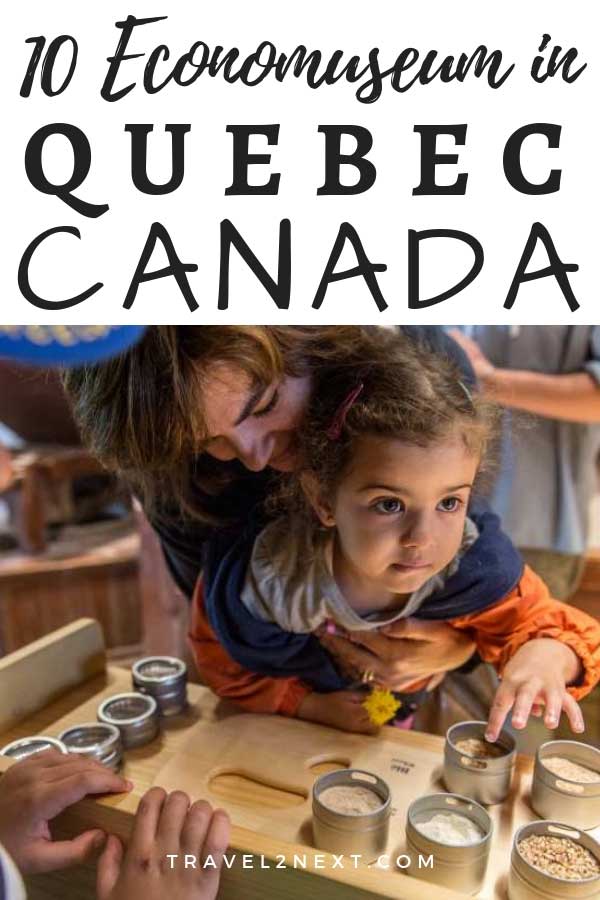
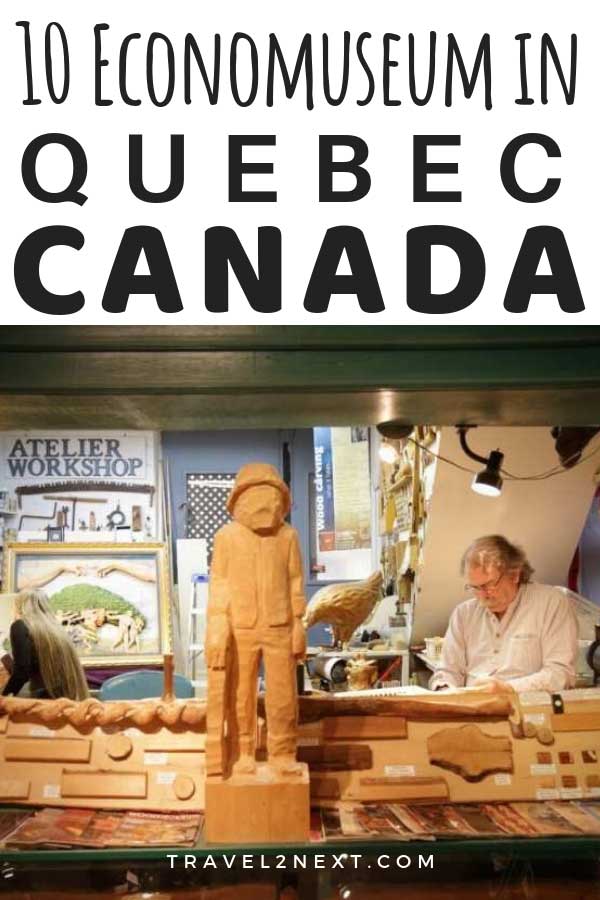
Plan Your Trip

Rent A Car – Find the best car rental rates at Discover Cars. They compare car hire companies to provide you with the best deal right now.

Find A Hotel – If you’re curious about this article and are looking for somewhere to stay, take a look at these amazing hotels.





